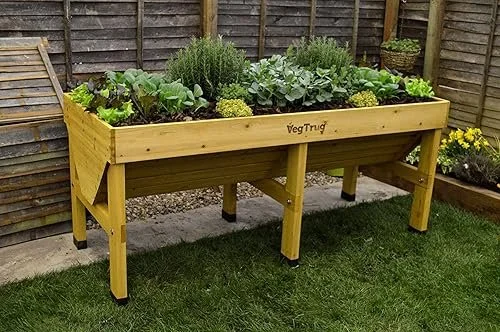First-time gardeners should start small, perhaps with a "kitchen garden" that will offer fresh herbs and a small quantity of fruits and vegetables for use in summer meals.
Setting aside a small plot near the kitchen or back door or choosing to arrange containers or hanging baskets near a porch or patio may be all that it takes for a beginning gardener to become a more confident gardener.
Lettuce, tomatoes, peppers and herbs such as parsley, basil or rosemary are easy to grow and make flavorful additions to summer menus.
Community Garden
In the U.S., community gardens originated during an economic depression in the 1890s as a way for city residents to grow their own food. Today, community gardens are often organized by churches, neighbors, schools, or groups of employees. Some provide produce for food banks, some rent space for anyone who wants to garden, and others are loose affiliations of neighbors.
To develop a community garden, first organize the group of gardeners who will use the land. Identify a space for the garden and contact the owner (if not a part of the group) to obtain use of the land. Start gathering supplies and developing a garden structure (materials for raised beds, water supply and irrigation, organic matter and fertilizer).
4 Steps to a Quick and Easy Garden
Here are step-by-step instructions for starting a simple vegetable garden, fall or spring :
1) Build a frame for raised garden bed using wood or stacked bricks. Only the siding is needed, as the soil should drain directly into the ground.
2) Fill the frame with a rich soil. Do not use soil that intended for ornamental plants. Read the packaging.
3) Plant seeds on or into soil, depending on which vegetable you’re growing. Read the seed packet for instructions.
4) Water the seeds according to instructions on the seed packet, allowing for good drainage. Do not over-water. Vegetables don't grow well if their roots are wet too often.
Herb Gardens
An herb garden is a good place to begin gardening. Most herbs are easy to grow and tolerant of forgetfulness. Small plots or pots are sufficient and almost any location with at leaset five hours of sunshine a day will suffice.
When planting in containers, choose one that’s at least 20 inches in diameter. Put gravel in the bottom of the pot, covering the drainage hole. This will hold in the dirt while allowing excess water to be released. Then fill the container about two thirds full with sterilized potting soil.
Begin planting herbs by loosening the dirt around the roots before placing the plant in the soil. Cover the roots with more soil and then continue to the next plant.
Plant tallest growing plants in the center of the container, with shorter plants grouped around the outside.
Before watering each day, poke a finger into the dirt. If the soil is dry up to an inch below the top, it’s time to water. If not, don't water.

